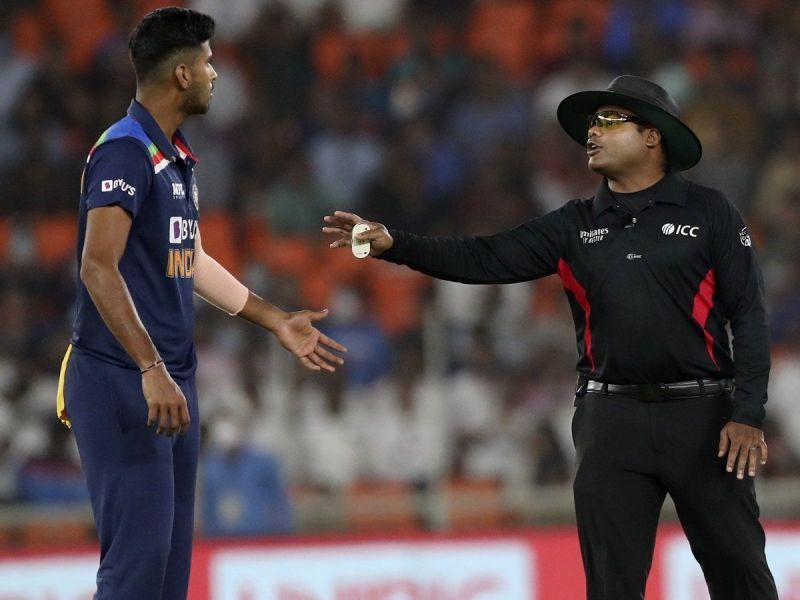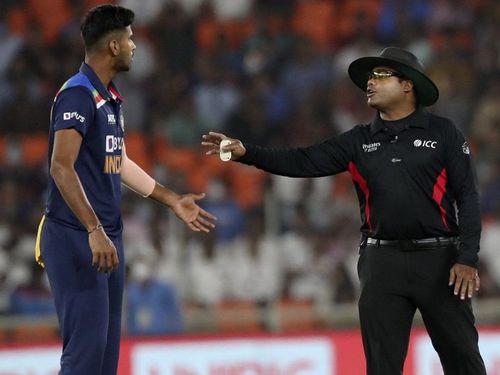
What is a ‘soft signal’ in cricket?

In a matter of hours, discussions regarding the efficacy of the soft signal in cricket have gone through the roof. The reason for the unrelenting discussion is Suryakumar Yadav’s dismissal during the fourth India vs England T20I.
Dawid Malan completed a catch at fine leg in the first innings, with the umpire unsure about the legality of the dismissal as the Englishman’s fingers were too close to the ground. He referred the decision upstairs, but signalled ‘out’ as a soft signal to the third umpire.
The third umpire ran through the process, taking the better part of five minutes to look at the catch from all the available camera angles. To the naked eye, and many analysts covering the game, it looked like Dawid Malan had dropped the catch.
No part of his finger seemed to be underneath the ball, with his right hand coming off the ball as he dived forward to complete the catch. But the third umpire had no conclusive evidence and did not overturn the decision, deciding to stay with the on-field umpire’s call.
The decision triggered an uproar in cricketing circles, with many questioning the practicality of the soft signal at a time when the catch was completed several yards away from the umpire. Players like VVS Laxman, Stuart Broad and Virat Kohli suggested the soft signal rule needs to be changed for the game's benefit.
But what exactly is the ‘soft signal’?
Soft signal explained
Simply put, a soft signal is a signal given by the on-field umpire to the third umpire based on his real-time judgment of the call. The argument is that since the on-field umpire is closest to the incident, he is in the best position to make a decision.
The soft signal is used as a piece of advice by the on-field umpire to the third umpire, which is supposed to help the TV umpire while judging the call. In the case of a review for a catch or an on-field event, the umpire is mandated to give a soft signal to the TV umpire.
The TV umpire has to keep in mind the soft signal while analysing the dismissal. He can only overturn the on-field umpire’s call if there is conclusive evidence to do so. In the absence of such evidence, the third umpire has no option but to stick with the on-field umpire’s soft signal.
This is because just like the umpire’s call, all the review systems in place right now are tilted in favour of staying with the on-field umpire’s decision.
Why the soft signal is necessary from a broadcasting perspective
After all the bedlam surrounding Suryakumar Yadav’s dismissal, many questioned why there was a need for a soft signal in the first place. The same was explained by popular presenter Harsha Bhogle, who discussed how a soft signal is necessary at a time when technology is not 100% accurate.
The problems with the soft signal in its current form
While there are arguments for the importance of the soft signal, Suryakumar Yadav’s dismissal highlighted several blind spots in the rule that need to be improved upon.
Firstly, the on-field umpire is mandated to give a soft signal whenever a decision goes upstairs. The rule proved to be detrimental yesterday, as the umpire had to decide on a catch that was 40-50 metres away from the square-leg umpire.
If the third umpire is not able to make a definitive decision despite the countless angles and replays at his disposal, how can the on-field umpire be expected to do so with a naked eye?
Another aspect is how the soft signal piles too much pressure on the third umpire. With there being no clear definition of conclusive evidence, the third umpire has no option but to go with the soft signal more often than not.
It remains to be seen whether we see any tangible changes in the soft signal rule post yesterday’s debacle. However, a positive out of the turn of events is that the incident has triggered a debate around its usefulness, which augurs well for the constant evolution of cricket.